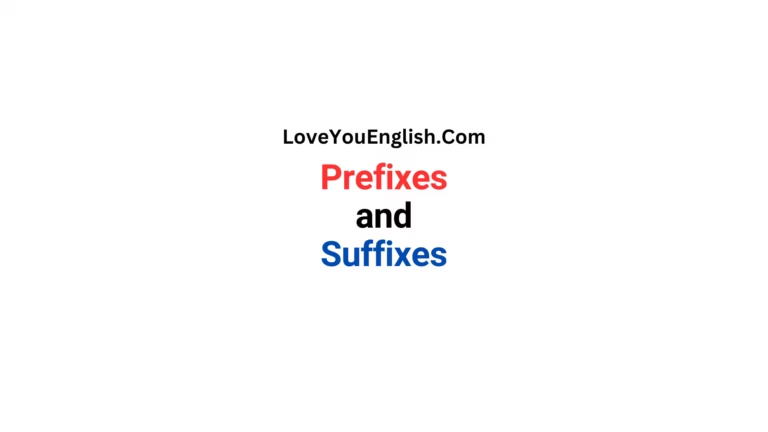Understanding English Pronouns: I, Me, Myself, and My
Have you ever wondered when to use “I” instead of “me,” or when “myself” is the right choice?
Don’t worry, you’re not alone! Many English speakers, both native and non-native, sometimes struggle with these words.
In this post, we’ll explore the correct usage of “I,” “me,” “myself,” and “my.”
I’ll break down each word, explain when to use them, and provide lots of examples to help you understand.
The Basics: What Are Pronouns?
Before we dive into our specific words, let’s start with the basics.
Pronouns are words we use to replace nouns (names of people, places, or things) in sentences.
They help us avoid repeating the same words over and over.
For example, instead of saying “John likes apples. John eats apples every day,” we can say “John likes apples.
He eats them every day.” In this case, “he” replaces “John,” and “them” replaces “apples.”
The words we’re focusing on today – “I,” “me,” “myself,” and “my” – are all pronouns.
Specifically, they’re first-person singular pronouns, which means they refer to the person speaking or writing.
Understanding “I”:
“I” is what we call a subject pronoun. We use it when the person speaking or writing is doing the action in the sentence.
In other words, “I” is the doer of the action.
Examples:
In each of these sentences, “I” is performing the action: loving, going, and thinking.
A common mistake is using “me” instead of “I” in compound subjects.
For example:
Incorrect: Me and John went to the movies.
Correct: John and I went to the movies.
Remember, if you’re not sure, try taking out the other person and see if the sentence still makes sense.
You wouldn’t say “Me went to the movies,” so “I” is the correct choice.
Understanding “Me”:
We use it when the person speaking or writing is receiving the action in the sentence, or when they’re the object of a preposition.
Examples:
In these sentences, “me” is receiving the action (getting a grade, being passed the salt) or is the object of a preposition (“for”).
A common mistake is using “I” instead of “me” as the object of a sentence:
Incorrect: Please give the book to John and I.
Correct: Please give the book to John and me.
Again, if you’re not sure, try removing the other person. You wouldn’t say “Please give the book to I,” so “me” is correct.
Understanding “Myself”:
“Myself” is a reflexive pronoun.
We use it in two main ways:
a) For emphasis:
I myself don’t like spicy food.
I made this cake myself.
b) When the subject and object of a sentence are the same person:
I hurt myself while cooking.
I’m proud of myself for finishing the marathon.
A common mistake is using “myself” when “I” or “me” would be correct:
Incorrect: John and myself went to the store.
Correct: John and I went to the store.
Incorrect: Please contact John or myself with any questions.
Correct: Please contact John or me with any questions.
Understanding “My”:
“My” is a possessive adjective.
We use it to show ownership or association.
Examples:
This is my book.
“My” always comes before a noun. It shows that the noun belongs to or is associated with the speaker.
A common mistake is confusing “my” with “I’m” (the contraction of “I am”):
Incorrect: My going to the store later.
Correct: I’m going to the store later.
Putting It All Together: Sentence Examples
Now that we’ve covered each word individually, let’s look at some sentences that use multiple words:
I love my new car. It makes me happy every time I drive it.
My friends and I are going to the beach. We’re excited to enjoy ourselves.
I hurt myself while fixing my bicycle, so my mom is helping me finish the repair.
In these examples, you can see how “I,” “me,” “myself,” and “my” work together in natural speech.
Common Mistakes and How to Avoid Them
Let’s review some common mistakes people make with these pronouns and how to correct them:
a) Using “I” as an object:
Incorrect: Between you and I, I think the party was a disaster.
Correct: Between you and me, I think the party was a disaster.
b) Using “me” as a subject:
Incorrect: Me and my sister are going shopping.
Correct: My sister and I are going shopping.
c) Overusing “myself”:
Incorrect: If you have any questions, please ask myself.
Correct: If you have any questions, please ask me.
d) Confusing “my” and “I’m”:
Incorrect: My excited about the concert tonight.
Correct: I’m excited about the concert tonight.
To avoid these mistakes, try these tips:
For “I” vs. “me,” remove the other person from the sentence and see which sounds right.
Only use “myself” for emphasis or when you’re doing something to yourself.
Remember that “my” always comes before a noun, while “I’m” is a contraction of “I am.”
Practice Exercises
Here are some exercises to help you practice using these pronouns correctly.
Try filling in the blanks with the correct word: I, me, myself, or my.
- _____ am going to the store.
- Can you help _____ with this problem?
- This is _____ favorite book.
- I made this cake all by _____.
- _____ sister and _____ are best friends.
- The teacher gave _____ a good grade.
- _____ proud of _____ for finishing the project.
- Between you and _____, I think the surprise party is a bad idea.
- _____ going to clean _____ room today.
- Please give the message to John or _____.
(Answers: 1. I, 2. me, 3. my, 4. myself, 5. My, I, 6. me, 7. I’m, myself, 8. me, 9. I’m, my, 10. me)
Real-World Applications
Understanding how to use these pronouns correctly is important in many real-world situations:
Job Applications and Interviews:
Using correct grammar in your resume, cover letter, and during interviews shows professionalism and attention to detail.
Academic Writing:
Proper use of pronouns is crucial in essays, research papers, and other academic work.
Business Communication:
Whether you’re writing emails, reports, or giving presentations, using pronouns correctly helps you communicate clearly and professionally.
Social Media:
Even in casual online communication, using pronouns correctly can help you express yourself more clearly and avoid misunderstandings.
The Importance of Context
Remember that context is key when using these pronouns.
The same word can be correct or incorrect depending on its role in the sentence.
Always consider the function of the pronoun in the sentence:
- Is it doing the action? Use “I.”
- Is it receiving the action? Use “me.”
- Is it showing possession? Use “my.”
- Is it for emphasis or reflexive action? Use “myself.”
Regional and Dialectal Variations
It’s worth noting that in some dialects or informal speech, you might hear these pronouns used differently.
For example, some people might say “Me and my friends are going out” in casual conversation.
While this isn’t considered standard grammar, it’s common in informal speech in some regions.
However, in formal writing, academic settings, and professional contexts, it’s important to use standard grammar rules.
Conclusion:
Mastering the use of “I,” “me,” “myself,” and “my” takes practice, but it’s an important part of speaking and writing English clearly and correctly.
Remember:
- Use “I” when you’re the subject doing the action.
- Use “me” when you’re the object receiving the action.
- Use “myself” for emphasis or when the subject and object are the same.
- Use “my” to show possession.
Don’t be discouraged if you make mistakes – even native English speakers sometimes struggle with these pronouns.
The key is to practice and pay attention to how you’re using them.
Over time, using them correctly will become second nature.
Keep practicing, and don’t hesitate to refer back to this guide when you’re unsure.
With time and effort, you’ll become more confident in your use of these pronouns, improving your overall English communication skills.
Remember, language is a tool for communication.
The goal is to express yourself clearly and be understood.
By using these pronouns correctly, you’re making your communication more effective and professional.
Keep up the good work, and happy learning!








